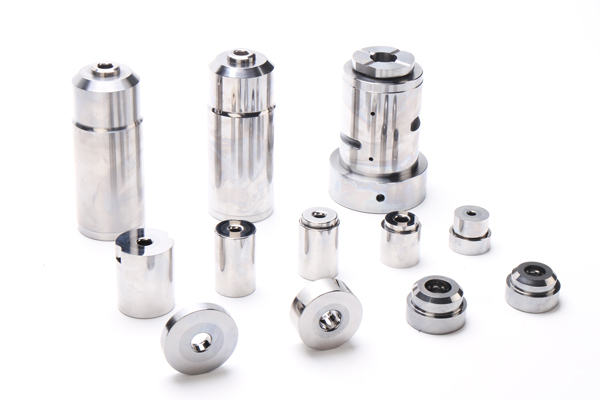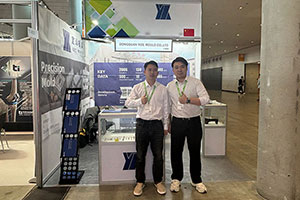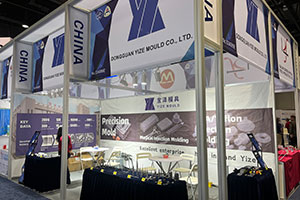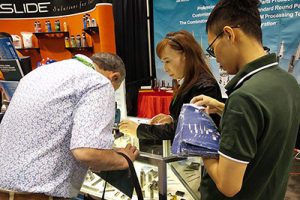Thermal Conductivity of Tungsten Carbide
In the constellation of industrial materials, tungsten carbide shines like a brilliant star, standing out with its exceptional properties such as high hardness, high strength, high wear resistance, and high […]
In the constellation of industrial materials, tungsten carbide shines like a brilliant star, standing out with its exceptional properties such as high hardness, high strength, high wear resistance, and high heat resistance. It has found widespread applications across numerous industrial fields. Among these properties, thermal conductivity acts as a crucial cog, directly influencing the efficiency of materials in processes like heat exchange and heat conduction, and thus determining the performance of tungsten carbide in various application scenarios. This article will delve into the thermal conductivity of tungsten carbide, covering the measurement of its thermal conductivity coefficient, influencing factors, and its specific performance in practical applications.
Thermal Conductivity Coefficient of Tungsten Carbide: Good Performance at Room Temperature and Dynamic Changes
The thermal conductivity coefficient is a core parameter for measuring the thermal conductivity of a material. It precisely indicates the amount of heat transferred per unit time through a unit area and unit thickness of the material under a unit temperature difference. For tungsten carbide, at a room temperature of around 20℃, its thermal conductivity coefficient is approximately 147 W/(m·K). This data clearly shows that tungsten carbide exhibits excellent thermal conductivity at room temperature, functioning like an efficient “heat transporter” that rapidly transfers heat from high-temperature regions to low-temperature regions, achieving a rapid equilibrium of heat distribution.
Onze fabriek business: carbide onderdelen, schimmel onderdelen, medische spuitgietmatrijzen, precisie spuitgietmatrijzen, teflon PFA spuitgieten, PFA buismontage. e-mail: [email protected],whatsapp:+8613302615729.
However, the thermal conductivity coefficient of tungsten carbide is not constant but rather changes dynamically, like a sensitive “thermometer,” influenced by multiple factors. The material composition and chemical composition are key factors affecting the thermal conductivity coefficient. As an alloy material, tungsten carbide’s thermal conductivity is similar to a unique “flavor” created by different combinations of ingredients, which is determined by its constituent elements and alloy compositions. Additionally, the grain size and processing technology of the material also act like a magical “wand,” having a significant impact on the thermal conductivity coefficient. Finer grain sizes result in higher thermal conductivity coefficients, and advanced processing technologies can reduce internal defects and impurities in the material, clearing the way for smooth heat transfer and further improving thermal conductivity.

Multi-dimensional Analysis: Key Factors Influencing the Thermal Conductivity of Tungsten Carbide
Material Composition and Chemical Composition: Composition Differences Determine Thermal Conductivity Characteristics
The thermal conductivity of tungsten carbide materials is closely related to their composition and chemical composition, just as genes determine the characteristics of living organisms. Tungsten, as the “leading actor” in tungsten carbide, dominates with its high melting point and high hardness. However, different compositions of tungsten carbide exhibit significant differences in thermal conductivity. For example, tungsten carbide with a high carbon content is like a warrior clad in a hard armor, possessing high hardness and wear resistance but relatively weak thermal conductivity. In contrast, tungsten carbide with a high cobalt content is like a flexible dancer, combining good toughness with thermal conductivity.
Moreover, to further optimize the performance of tungsten carbide, other alloy elements are added. The types and contents of these alloy elements are like seasonings in cooking, requiring precise control. Different combinations and proportions will have varying effects on the thermal conductivity of tungsten carbide. Therefore, when designing and selecting tungsten carbide materials, it is essential to carefully choose the appropriate composition and chemical composition according to specific application scenarios and requirements, just as selecting the right seasonings for different dishes.
Grain Size and Processing Technology: The Synergy of Microstructure and Manufacturing Processes
Grain size is another important microscopic factor influencing the thermal conductivity of tungsten carbide. Finer grain sizes mean more grain boundaries in the material. Since heat transfer encounters less resistance at grain boundaries, it can be quickly transmitted, similar to a smooth highway, thereby improving thermal conductivity. Therefore, adopting fine-grain technology during the preparation of tungsten carbide materials is like building an efficient “heat passage” for the material, effectively enhancing its thermal conductivity.
Processing technology is the key step for “fine-tuning” the thermal conductivity of tungsten carbide. Taking the sintering process as an example, optimizing parameters such as sintering temperature, time, and pressure is like a skilled craftsman reducing internal pores and defects in the material, increasing its density, and enabling heat to be transferred more smoothly. At the same time, advanced heat treatment technologies are like magical spells that can improve the internal structure of tungsten carbide and further enhance its thermal conductivity.
Practical Applications: The Outstanding Performance of Tungsten Carbide’s Thermal Conductivity in High-Temperature Fields
The high thermal conductivity of tungsten carbide materials makes them a “star player” in high-temperature environments, demonstrating unique advantages. On the high-temperature “stage,” tungsten carbide can rapidly transfer heat to the surrounding environment or cooling medium, acting like a calm conductor to maintain the stability of the material’s own temperature and ensure its stable operation under high-temperature conditions.
In the aerospace field, tungsten carbide materials are widely used in manufacturing key components such as engine nozzles and combustion chambers. These components have to withstand extremely high temperatures and pressures under high-temperature conditions, placing extremely stringent requirements on the thermal conductivity of the materials. The high thermal conductivity of tungsten carbide is like a loyal guardian, ensuring that these components maintain stable temperature distributions and performance under high temperatures, providing strong guarantees for the reliable operation and long service life of the entire engine.
In the field of high-speed cutting tools, the high thermal conductivity of tungsten carbide materials also plays a crucial role. During high-speed cutting, a large amount of heat is generated on the tools. If this heat cannot be dissipated in a timely manner, it will lead to increased tool wear and severe deformation, affecting cutting accuracy and efficiency. The high thermal conductivity of tungsten carbide is like a “cooling fan,” ensuring that the tools maintain a low temperature during high-speed cutting, reducing tool wear and deformation, and improving cutting accuracy and efficiency, thus providing strong support for efficient machining.
In the manufacturing of high-temperature containers such as melting boats, the high thermal conductivity of tungsten carbide materials is also of vital importance. During the high-temperature melting process, the containers have to withstand the test of high temperatures. If heat cannot be transferred out in a timely manner, the containers will be damaged or deformed due to overheating. The high thermal conductivity of tungsten carbide can rapidly transfer heat to the surrounding environment or cooling medium, preventing overheating of the containers and ensuring the smooth progress of the melting process.
In conclusion, tungsten carbide, as a high-performance alloy material, exhibits excellent thermal conductivity. Its thermal conductivity coefficient is approximately 147 W/(m·K) at room temperature and is influenced by various factors such as material composition, chemical composition, grain size, and processing technology. In practical applications, the high thermal conductivity of tungsten carbide materials gives them broad application prospects in high-temperature environments. With the continuous progress of science and technology and the ongoing development of industry, tungsten carbide materials will undoubtedly showcase their unique charm in more fields and make greater contributions to promoting industrial development.






